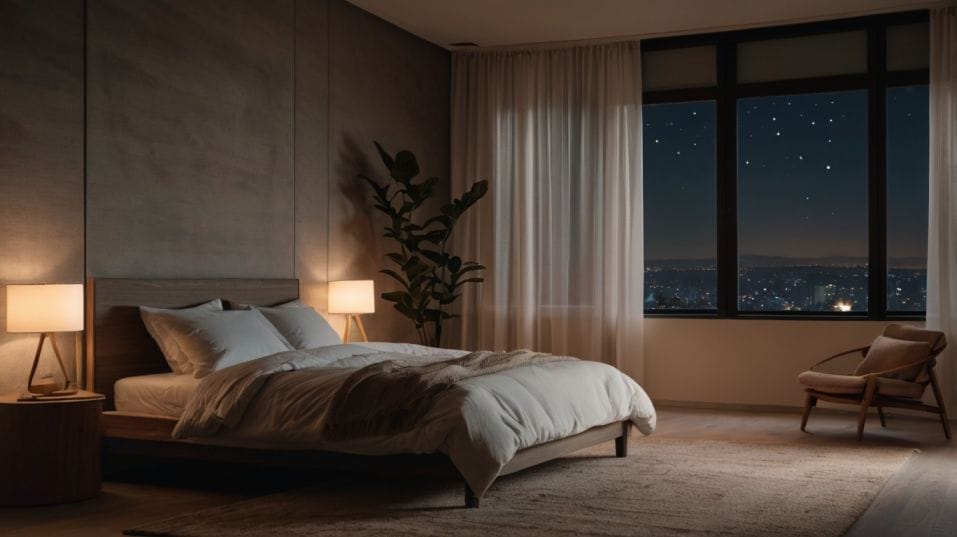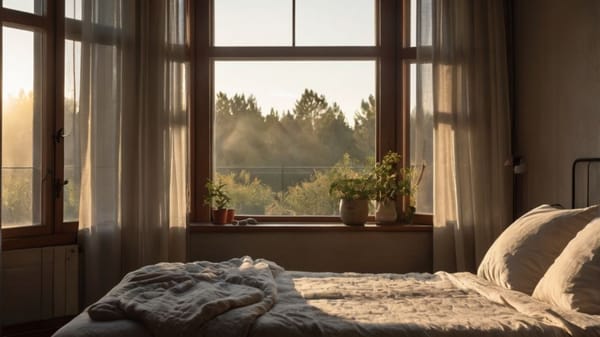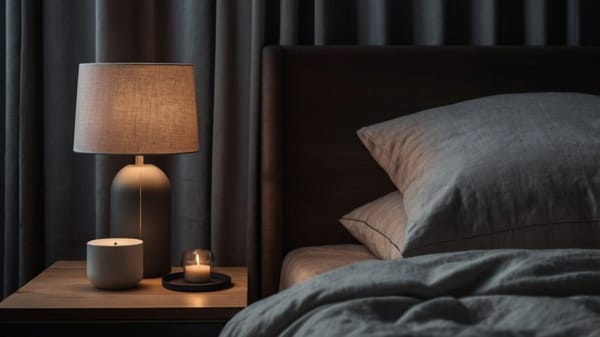How Noise Affects Your Sleep and What to Do About It
Discover how everyday noise wrecks your sleep—and simple, science-backed fixes that help you wake up refreshed, focused, and fully recharged.

Ever wonder why you still wake up tired—even after eight hours in bed? It might not be your mattress or bedtime routine. It could be noise.
Even faint sounds—like a fridge hum or distant traffic—can disrupt your brain while you sleep. You don’t need silence, but you do need control.
In this guide, you’ll learn how to protect your sleep from hidden sound sabotage and wake up with real energy, not just time served in bed.
Noise: The Silent Sleep Killer
You’re asleep. Or you think you are. But while you’re dreaming, your brain is scanning for threats. That’s not metaphor—it’s evolutionary biology.
Your auditory system stays partially active all night long, a holdover from when nighttime predators were a real concern. That internal watchdog can’t tell the difference between a predator and a passing garbage truck.
This is where noise gets sneaky. Even if it doesn’t fully wake you, it can cause micro-arousals—brief shifts in brain activity that pull you out of deep sleep or REM without you realizing it.
You roll over more, your heart rate spikes, and your sleep quality tanks. You wake up technically “well rested” by the clock but feel foggy, irritable, or just off.
Research backs this up. Studies show that consistent exposure to noise—especially intermittent or unpredictable noise—reduces slow-wave (deep) sleep and shortens REM cycles.
This cuts into your brain’s memory processing, your body’s physical repair, and your overall energy.
If you’re wondering why your sleep feels “light” or why you wake up tired even after a full eight hours, noise might be your culprit.

What Counts as Noise?
Noise isn’t just jackhammers and subwoofers. It's your fridge compressor kicking on. Your partner snoring. Your cat jumping off the counter.
Even “pleasant” noises like background TV or soft music can disrupt your sleep cycles if they’re inconsistent or contain spoken words.
The real issue isn’t always volume—it’s variability. Sudden shifts in volume or pitch grab your brain’s attention, waking up your nervous system just enough to do damage.
Some common culprits:
- Urban traffic (especially motorcycles or emergency vehicles)
- Barking dogs
- Loud neighbors or apartment foot traffic
- HVAC systems with irregular cycles
- Late-night streaming with autoplay trailers
You can’t always eliminate these completely. But you can absolutely reduce their impact—and train your body to be less reactive.
How to Defend Your Sleep From Noise
You don’t need a perfectly silent room. You just need consistency and control. Here’s how to make it happen in a real-world setting:
Engineer Your Environment
Think of your bedroom as an audio studio for sleep. The goal: soften, absorb, and neutralize sound.
- Seal the space: Weather-stripping doors and windows, using heavy curtains, and laying down rugs can seriously dampen outside noise. Even bookshelves or thick fabric wall hangings help.
- Rearrange strategically: If possible, move your bed away from shared walls or street-facing windows. Even a few feet makes a difference.
- Identify repeat offenders: Listen to your room at night. Is it the fridge? An air vent? A clock ticking? Track the source, then fix, unplug, or relocate.
Layer in Controlled Sound
Silence isn't always realistic—or even optimal. Enter white noise, pink noise, or ambient soundscapes. These work by creating a stable background noise that masks sudden peaks.
- White noise is like a static blanket—think fan or static.
- Pink noise (like rain or ocean waves) is gentler and more balanced, which some people find more relaxing.
- Apps and devices: There are plenty of options that let you choose the sound texture that works for you. Look for ones that don’t have audio loops you can detect—your brain will notice.
These tools help your brain stay in sleep mode by reducing contrast between background noise and sudden interruptions.
Upgrade Your Earplugs (or Skip Them)
Earplugs are a simple fix—until they’re not. Foam ones may be uncomfortable, fall out, or amplify your own internal noises (like your heartbeat or breathing).
- Try molded silicone or high-fidelity sleep-specific plugs. These are designed to be low-profile and breathable while still blocking noise effectively.
- If earplugs aren’t your thing, headband-style sleep headphones can offer light pressure and audio masking in one device. Just make sure the fabric is breathable.
Build a Brain That Sleeps Through It
Noise-proofing your room is only part of the solution. You also need to train your body to respond less intensely to sound. Think of it as building sleep resilience.
Start with How You Wind Down
Your brain needs a clear signal that it’s safe to unplug. Avoid falling asleep with the TV or podcast running. Spoken words engage your language centers and make your brain work harder, even during sleep.
Instead, give yourself at least 30 minutes of low-stimulation time before bed. No screens, no conversations, no background noise. Silence is a cue. Use it to your advantage.
Make Your Sleep Schedule Non-Negotiable
A consistent bedtime and wake time—even on weekends—strengthens your circadian rhythm. When your body knows when to expect sleep, it falls into deeper stages more quickly and with fewer disruptions.
That means you’re less likely to jolt awake from random noises. Your brain is too busy getting real rest.
Don’t Make Noise a “Thing”
If you do wake up from a sound, don’t catastrophize. Don’t check the time. Don’t grab your phone. Stay in place.
Let your body settle. The less importance you attach to the interruption, the faster you’ll bounce back. Your body follows your mind’s lead.
Final Thoughts
Noise doesn’t have to control your sleep. Once you understand how it affects your brain, you can build smarter defenses—ones that fit into your routine without requiring a total lifestyle overhaul.
So start tonight. Walk through your room. Spot the sound sources. Choose your noise-masking tool. Block, soften, or tune out what doesn’t belong.
With just a few tweaks, you can build a bedroom that actually works for sleep—and wake up sharper, calmer, and way more ready to own your day.




